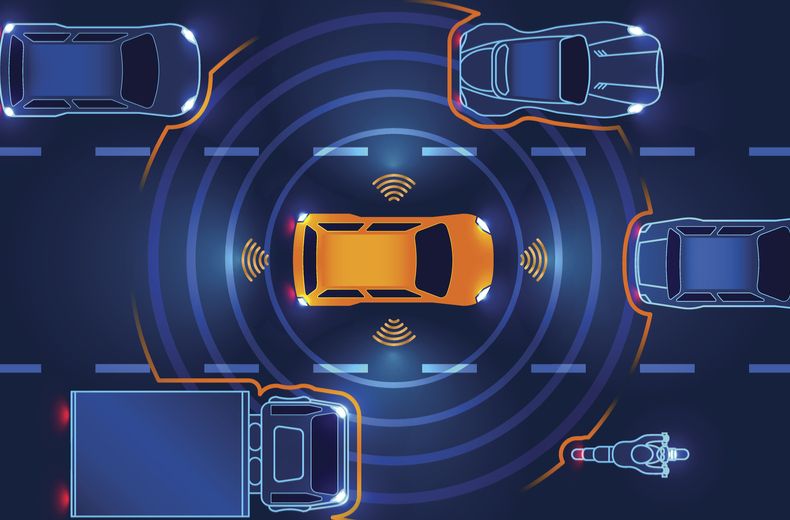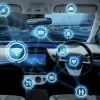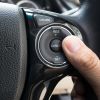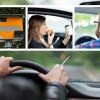But how do they work? When will they be available? Are they safe? Are they legal?
In an effort to find out, we discuss the issues that driverless cars must overcome and go over the infrastructure, legislative and technological developments that must happen before fully automated driving becomes a reality.
How do driverless cars work?
Say ‘driverless car’ and most of us imagine a machine that needs no input from a person — just select your destination and sit back and relax while the four-wheeled robot whisks you to where you need to be.
That experience is still some way off, but many new cars already offer some degree of automation — even if, for legal reasons, you still have to keep your hands on the wheel and eyes on the road. We’ll look at these in the next section.
A fully self-driving car uses numerous sensors and cameras to continuously scan the area around it, detecting hazards like vehicles, pedestrians, traffic lights, and road markings and then braking, accelerating or steering accordingly.
Its computer brain has the ability to ‘learn’ and make decisions based on experience, rather than following a pre-programmed set of commands — essential for dealing with changing traffic conditions or unmapped roads.
It may also share information with other driverless cars to prevent accidents and ease congestion.
Are driverless cars available now?
Technically, no, although there are elements of driverless technology available in some current cars:
Automatic emergency braking
Perhaps the most obvious example is automatic emergency braking (AEB) — now a standard feature on most family cars — that uses radars to scan the road ahead and hits the brakes if it detects an imminent collision.
Increasingly sophisticated versions of AEB can spot pedestrians and animals, too.
Adaptive cruise control
ACC, or Radar cruise control, which maintains a set distance to the car in front, is also becoming commonplace, and can reduce the stress of traffic jams as well as boosting safety at higher speeds.
Lane-keep assist
There’s also lane-keep assist, which steers you gently back into your motorway lane if you start to drift – and may permit brief periods of ‘hands-off’ driving, depending on the system.
Parking assist
Available in high-spec versions of several popular models, few pieces of kit get closer to the core of driverless technology than parking assist. Using a combination of sensors and cameras, a car with this feature is essentially able to park itself, judging the size of a space before steering in if suitable. The driver controls the speed, parking assist does the rest.
What are the levels of autonomous driving?
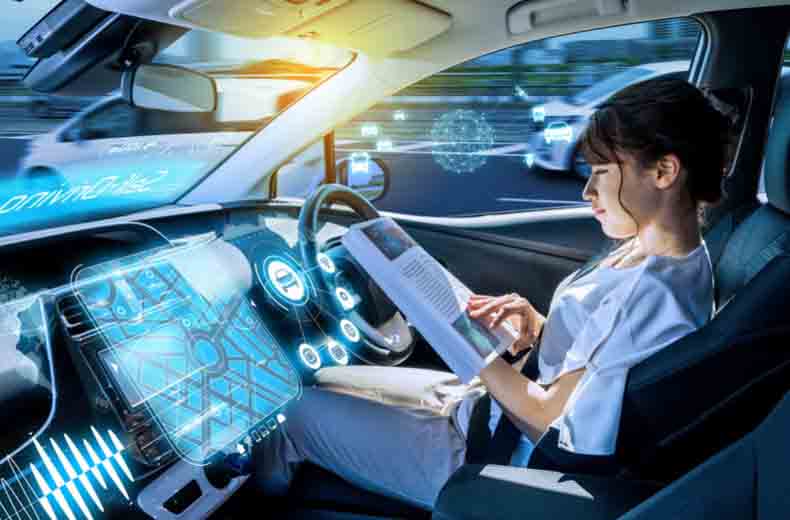
There are six widely-accepted levels of automation for driverless cars:
Level Zero
No driving automation.
Level One
Technology assists the driver with some aspect of driving – by augmenting braking pressure during an emergency stop, for example.
Level Two
At Level Two, the car can actually take over some aspects of driving. Automatic emergency braking and lane-keep assist both fit this description.
Level Three
Now the car can actually drive itself, but only in certain environments (e.g. on motorways) and for very limited periods. The driver must take back control when requested.
Level Four
At Level Four, the car drives automatically for sustained periods without needing input from the driver. However, it can only operate this way in certain areas – roads that have been pre-mapped, for instance.
Level Five
Lastly, there’s complete A-to-B autonomy, with no input from the driver. As seen in countless sci-fi films, it’s the obvious end-goal for driverless cars.

RAC sale – up to 33% off*
• Roadside cover from £5.29 a month†
• We get to most breakdowns in 60 mins or less
• Our patrols fix 4/5 breakdowns on the spot

When will autonomous cars be legal in the UK?
Currently, only Level Two vehicles are allowed to legally drive on UK roads, which means that the driver is expected to remain in control of the car at all times.
However, the UK government has said it is supportive of the ongoing development of driverless/autonomous cars and has set up the Centre for Connected and Autonomous Vehicles and Meridian, a centre for testing mobility technology.
Self-driving cars are not yet permitted for unsupervised use on UK roads, though they are expected to be by 2026.
The Automated Vehicles (AV) Act became law on May 20th, 2024, outlining the safety standards and procedures for automated vehicles. Additional regulations will be introduced between 2025 and 2026.
The primary goal of the law is to reduce human error and enhance road safety.
Although fully self-driving cars are not yet legal, many vehicles on the road today feature autonomous technologies.
What rules does a self-driving car follow?
The Department for Transport (DfT) currently permits driverless cars to be tested on UK roads providing they have a human driver on-board that has a manual override to take control of the car.
All vehicles must also be fitted with data-logging equipment in case of an accident and must follow the usual rules of the road, with the human drivers fully licensed and liable for any offences committed.
Can I drive an autonomous car now?
Government-backed trials of autonomous cars have taken place in Bristol, Coventry, Greenwich and Milton Keynes, while Volvo, Ford and Jaguar Land Rover have also conducted their own tests on UK roads.
Did you know, you can get fined for moving out of the way of an ambulance?
Want more useful content like this sent straight to your inbox?
Are driverless cars safe?
There have been several well-publicised crashes involving driverless vehicles, but statistically they remain much safer than conventional cars with a human behind the wheel.
A computer-controlled car doesn’t get tired, and it can’t be distracted by a mobile device, the radio, or kids fighting in the back seat.
It also sticks rigidly to the rules of the road, obeying speed limits and leaving a safe gap to the car in front.
The key concern with self-driving cars is around security. Cars, like any computer system, aren’t immune to hackers, and the prospect of your self-driving car being taken over remotely by a third-party is a terrifying one.
Biometric data, such as fingerprints or iris scans, is one option being looked at to prevent this.
- Driverless cars: the internet's most googled questions answered
- Electric cars - the ultimate buyers' guide
- Autonomous Emergency Braking: what you need to know
Can you drink-drive in a driverless car?
As it stands, this is a definite no. The law says you must be in control of your car at all times, so the limits and penalties for drink-driving are exactly the same.
Whether this changes with the roll-out of autonomous vehicles remains to be seen, so for now it’s best to either steer clear of alcohol altogether, find a sober friend, or take a taxi.
Can you sleep in a driverless car?
Again, this is currently not allowed, particularly if you’re sleeping off a heavy night. However, that’s not to say that the laws around sleeping in driverless cars won’t change in the future.
Benefits of driverless cars in the future
Driverless cars and autonomous vehicles offer several potential benefits, which could be commonplace on UK roads in the future.
Improved road safety
By reducing human error, which is responsible for a significant number of accidents, AVs could lower traffic collisions, injuries, and fatalities.
Increased mobility
Autonomous cars could provide greater independence for people who are elderly, disabled, or otherwise unable to drive, improving their access to transportation.
Reduced traffic congestion
AVs could optimise traffic flow, adjust speeds, and communicate with other vehicles, potentially reducing traffic jams and the time spent in traffic.
Efficiency, environmental benefits and fuel savings
Self-driving cars could drive more efficiently than humans, with smoother acceleration, braking, and route planning, leading to reduced fuel consumption and lower emissions.
Reduced costs for car owners
Over time, self-driving cars may lead to fewer repairs and reduced costs associated with accidents.

